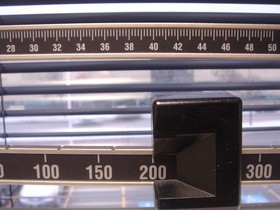 There can always be something a triathlete doesn’t like about their body. But since your basic body type is primarily determined through genetics, it’s futile to lament what you can’t change.
There can always be something a triathlete doesn’t like about their body. But since your basic body type is primarily determined through genetics, it’s futile to lament what you can’t change.
Maybe you are tall, thin, and lanky, or perhaps you are short, broad, and husky. The trick is to use what you’ve been given to your advantage.
Whatever body type you may have, improving your power-to-weight ratio (PWR) will aid you in reaching your full potential as a triathlete.
It is also known as strength-to-weight ratio. It’s especially critical as it relates to running and cycling; not quite as much with the swim, due to the buoyancy of the water.
For most triathletes, one of the most simple and cost-effective ways to get faster is to explore ways to increase your power-to-weight ratio.
The Formula
The power-to-weight ratio is the power a person generates, divided by their body weight.
It’s not brain surgery.
You improve your PWR by becoming lighter and maintaining or increasing muscular strength. Being "lean and mean" is all about your PWR.
Here’s why this is important: Success in the sport of triathlon relates to one’s ability to generate the greatest force and aerobic power, in the most economical manner, to overcome the drag or resistance of water, wind and terrain.
Power-To-Weight Ratio Examples
When comparing 2 triathletes who generate the same amounts of strength (like reaching the top of a bike climb together), the person with lower body weight will have a higher power-to-weight ratio.
If the heavier rider, carrying more body weight up the hill, exerts 100% effort in the climb, then his leaner counterpart should complete the climb with less effort. The leaner triathlete, with the higher power-to-weight ratio, will quickly break away if he or she increases their effort to 100%.
Theoretically, a triathlete with a higher PWR will ride and run faster and climb hills better compared to a person with a lower PWR. Similar advantages apply to running. Some research has shown that a runner can gain 1% in running speed for every 1% reduction in body fat.
It’s Not Just About Weight
 Don’t quit reading yet and go out and began a new diet to lose weight. It’s not that simple. The issue is not simply a matter of body weight reduction.
Don’t quit reading yet and go out and began a new diet to lose weight. It’s not that simple. The issue is not simply a matter of body weight reduction.
Too often, the miracle diet results in the loss of both fat and force — producing muscle tissue. So, don’t think of it as a "weight loss" issue, but instead as body composition change.
The idea with body composition change is to shed your excess fat without losing any lean mass. Your training program (especially on the nutrition side) needs to be constructed so that your muscles are getting what they need to grow stronger. This, in turn, helps improve your PWR.
Your body is composed mainly of fat, muscle, bone tissue, and water. Your genetics more or less determined the amount and proportion of fat, muscle, and bone tissue, as well as your baseline percentage of body water.
What is most in your control to change is your body fat percentage, and the growth of muscle and strength. Most elite male triathletes have a body fat percentage between 5% and 10%; it’s between 10% and 15% for females. If your percentage of body fat is way out of these ranges, then you have the greatest opportunity for improvement.
Following are some things you can do to improve your power-to-weight ratio.
 Step One: Get your body composition checked (every 8 weeks)
Step One: Get your body composition checked (every 8 weeks)
There are basically 4 ways to have your body composition checked:
1. Ultrasound Measurement Method, which is a method utilizing an ultrasound procedure that calculates body composition from taking measurements using an ultrasound machine at two sites on the body.
2. Impedance Measurement Method, which uses a very slight electrical current and measures impedance to calculate body composition.
3. Caliper Measurement Method, which is the most common method. You must have the same person check you for consistent measurements. Accuracy (hence consistency) is based on the experience/skill of the tester, and measurements taken in exactly same location. A good tester will have the ability to compensate for various skin thickness and pliability. A good option for most triathletes is to find an "experienced" person that uses calipers.
4. Water Weighing Measurement Method, which is a dunk tank. This method tends to be the standard that all other measurement tools are compared to. Its flaw is that results are dependent on a person exhaling "completely" when they get submerged into a tank full of water. If one does not completely exhale on each test, there will be a variance in results. It’s also comparatively much more expensive.
 Step Two: Be Realistic
Step Two: Be Realistic
For general health, a male needs 3-5% body fat, and a female 8-12%.
The average male adult has 8-15% body fat, and the average female 18-26%.
Male triathletes tend to have 4-12% body fat, and female triathletes 8-17%.
It’s going to take time to make changes to your body composition; be patient. Some triathletes seek guidance from a sport dietitian for determining how much you should lose while maintaining energy levels to train well. A professional can provide some insight on how much weight you can realistically lose to assist you in reaching your goals.
Decreasing your body fat while maintaining lean mass, and the energy to carry out triathlon train
ing, will take some planning. Most feel that decreasing your calories by 200-300 per day is a conservative, but smart, approach to fat reduction.
 Step Three: Follow a sound nutrition plan
Step Three: Follow a sound nutrition plan
The range what for you need in terms of the key nutrition components is as follows. Multiply the number of grams per pound of your body weight to determine your specific needs.
Cabs: 2.5 – 4.5 grams
Protein: 0.5 – 0.6 grams
Fat: 0.4 – 0.5 grams
Go with the low end of the range if you are training 1-2 hours per day, and the high end of the range if you are training 3-4 hours a day.
For weight reduction, the most tried and tested approach is to adopt an eating style with a calorie level that produces gradual, effective weight loss. Healthy weight loss is defined to be 2 pounds per week.
Remember that the quality of food matters. A serious triathlete will meet daily carbohydrate needs with a variety of nutrient-rich whole grain breads and cereals, pasta, rice, potatoes, vegetables and fruits. Protein should come from low saturated fat meats or plant sources such as soy beans or other legumes. Healthy fats from olive oil, flaxseed, nuts and avocados are a few good options. Avoid high sugar/calorie beverages (fruit juice blends, sodas, sports drinks) at and between meals. Go with low-calorie beverages to meet your hydration needs. Reserve the sports drinks and bars for use during training.
The timing of meals matters too. To maximize your metabolic rate, meals should be no more than 5 hours apart. Going longer than 5 hours between meals causes the human body to go into conservation mode physiologically. Eating 3 meals, with 1 or 2 healthy snacks daily, will keep your metabolic engine running on all cylinders. Be sure you evenly spread out your caloric intake throughout the day.
 Step Four: Train for more power
Step Four: Train for more power
Maintaining or increasing functional lean muscle mass is critical for improving your power-to-weight ratio.
Some form of periodized strength training should be a part of your overall year-round triathlon training program.
You can’t change your genetics, but you may be a candidate to significantly influence your body composition to aid your performance as a triathlete.




